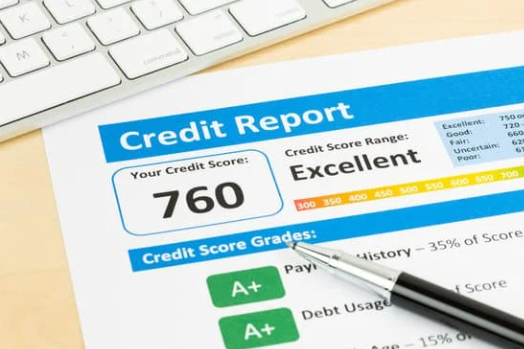
Introduction
We all use credit. It’s how we buy cars, homes, and even groceries. And while it’s useful to have access to credit in our lives, it’s also important to understand how it works—and what your options are when you need to make a big financial decision. In this article, we’ll explain some fundamentals about credit scores and reports, including what goes into them and how they can affect your life. We’ll also give you some tips on improving your score so that you can enjoy better terms on loans and other products with lower interest rates!
Your Credit Score
You probably have a credit score, or at least know what it is. It’s a number between 300 and 850 that measures how likely you are to pay back a loan. You can think of the higher end of that scale as the better off you are financially: the more money someone makes, for example, the higher their credit score tends to be.
The reason your current level of wealth dictates your future access to money isn’t just because lenders want to keep their profit margins stable—it’s also because they want to protect themselves from taking on more risk than they can handle if something goes wrong—like having an unpaid car loan lead them into bankruptcy when they’re already having trouble making ends meet due to unexpected medical expenses or job loss.
That said (and this may come as news), if you’re looking at improving your finances by raising your credit score over time, there’s good news: it doesn’t matter where you start out!
Your Credit Report Summary
So, you’ve done the work and gotten a free credit report summary. What’s next?
If you’re like most people, the answer to this question is “not much.” A credit report summary isn’t designed to be used by itself. Its purpose is to give you an idea of what your full credit report looks like—what information it contains and how trustworthy that information may or may not be. It’s then up to you to use that knowledge in order to get your actual, full copy from Experian (or whichever bureau provides it).
This means that if there are any inaccuracies on your full report, we recommend correcting them first before taking any actions based on its contents. After all, why would anyone want to make a big decision without having all their facts straight?
FICO® Score – A Brief Look
If you’re reading this, you probably have a FICO® Score. It’s a three-digit number that lenders use to predict how likely you are to repay your debts.
The most common version of the FICO® Score is based on information in your credit report, but there are other versions as well (including VantageScore®, which is newer). Each version has its own scale and uses different types of data from your credit report to calculate your score. The new FICO® Score 9 includes all of these elements in its calculation:
- Payment history for all accounts
- Amounts owed on revolving accounts (such as credit cards)
- Length of time those accounts have been open – longer = better
What’s in a FICO® Score?
A FICO® score is a number between 300 and 850 that’s based on information in your credit report. (You can get your free annual credit reports at AnnualCreditReport.com.)
Your FICO® Score is a snapshot of your credit profile, providing a summary of what’s in your credit report including:
• How you handle paying bills on time or not
• The types of accounts you have open, such as mortgages and car loans
• Any public records filed by lenders to get paid if you don’t pay them back
Understanding how credit works is the first step to improving your score.
You might think of credit as a way to buy things you need, such as a car or home. Or maybe you think of it as a way to get the stuff you want, like those new shoes or that fancy bottle of wine. And maybe you even use your credit card for some random purchases—like when you’re on vacation and don’t want to carry all that extra cash around. But there’s another reason why we should care about our credit scores: it affects our financial future.
Credit is made up of two words: credere (Latin for believe) and trust (Latin for trust). That sums up what happens when people use their credit cards: they entrust their money with someone else—whether that person is a bank, retailer or government agency—so they can pay later without carrying around cash all the time.
Conclusion
If you’re interested in learning more about credit, we recommend checking out our ‘Crown Your Credentials‘ e-book available on our website’s shop. It features a variety of information from understanding your credit and doing D.I.Y. credit repair that will help you understand how credit works and improve your score over time. You can also check out our blog for even more helpful content about ways to build your credit history!

I was very happy to uncover this page. I need to to thank you for ones time just for this fantastic read!! I definitely liked every little bit of it and I have you book-marked to see new information in your site.
Id like to thank you for the efforts you have put in penning this site. Im hoping to see the same high-grade blog posts by you in the future as well. In fact, your creative writing abilities has inspired me to get my own site now 😉